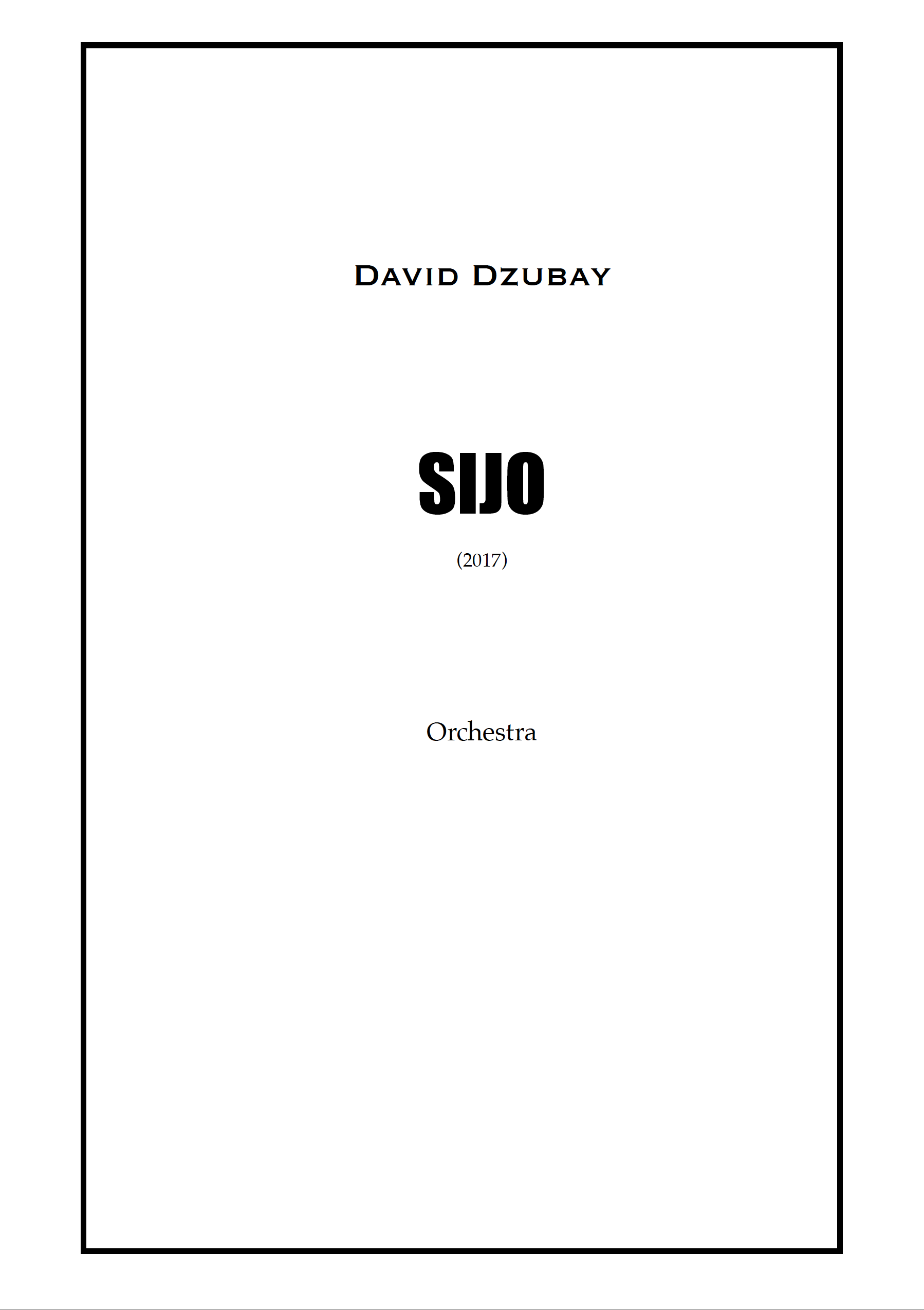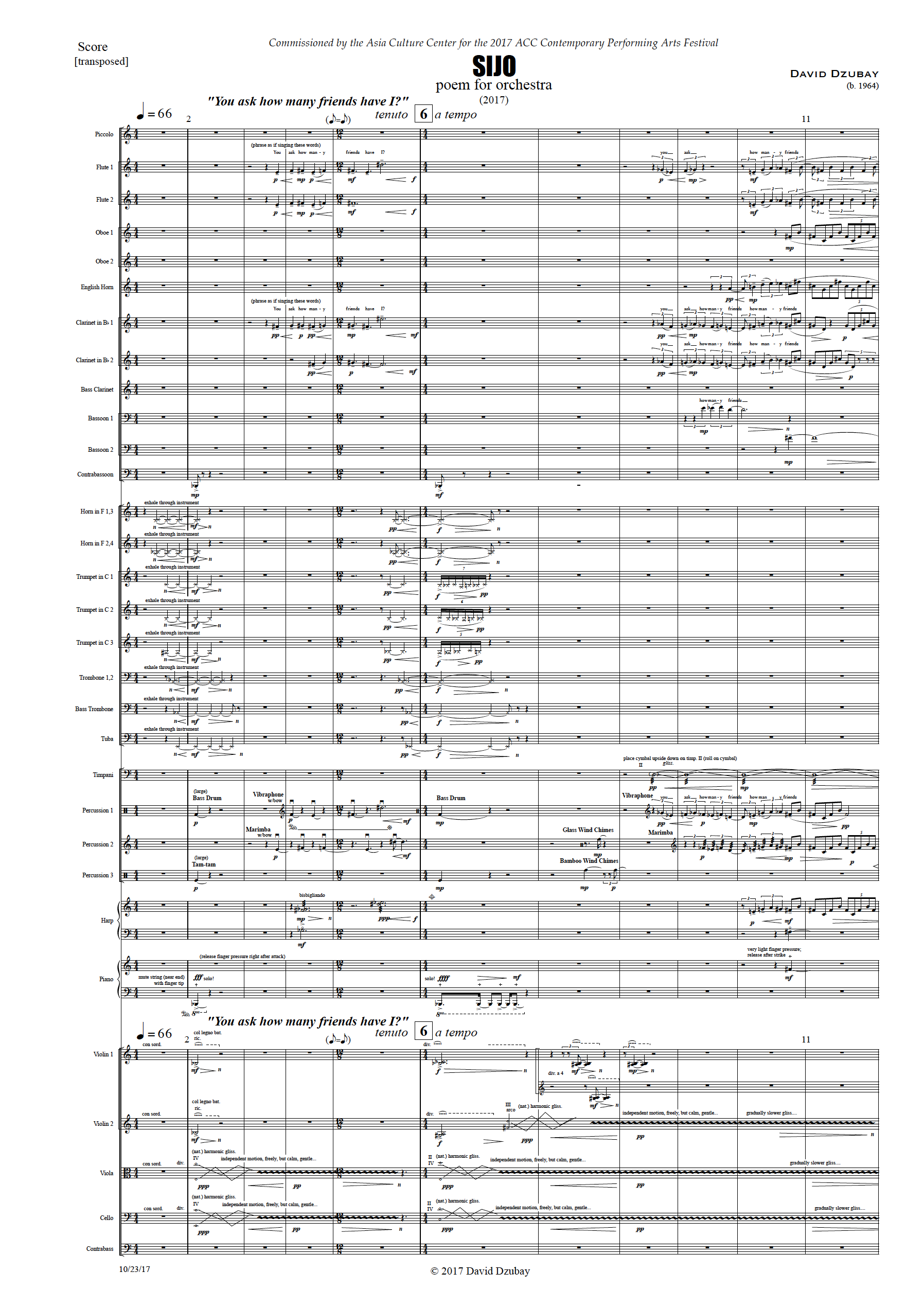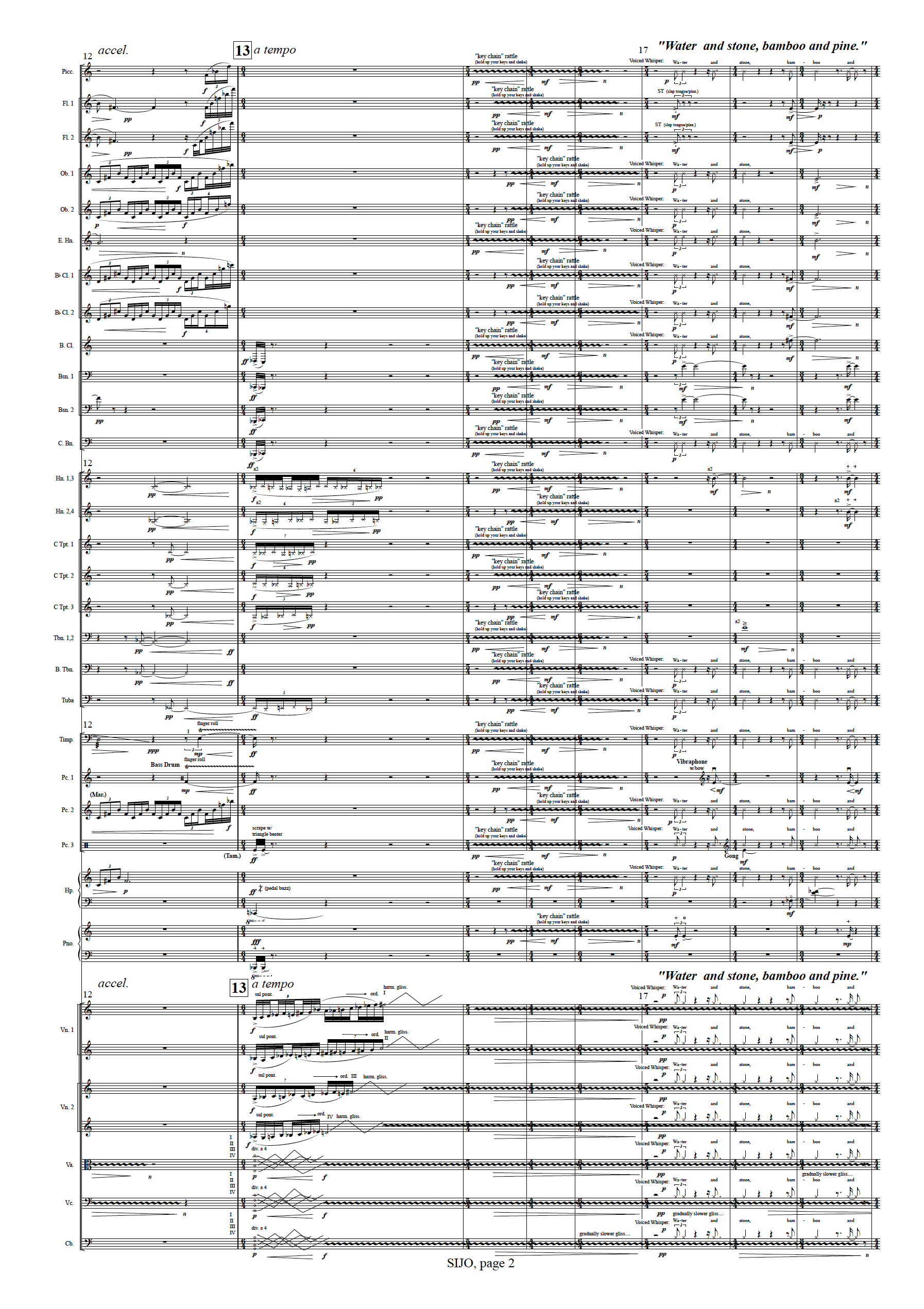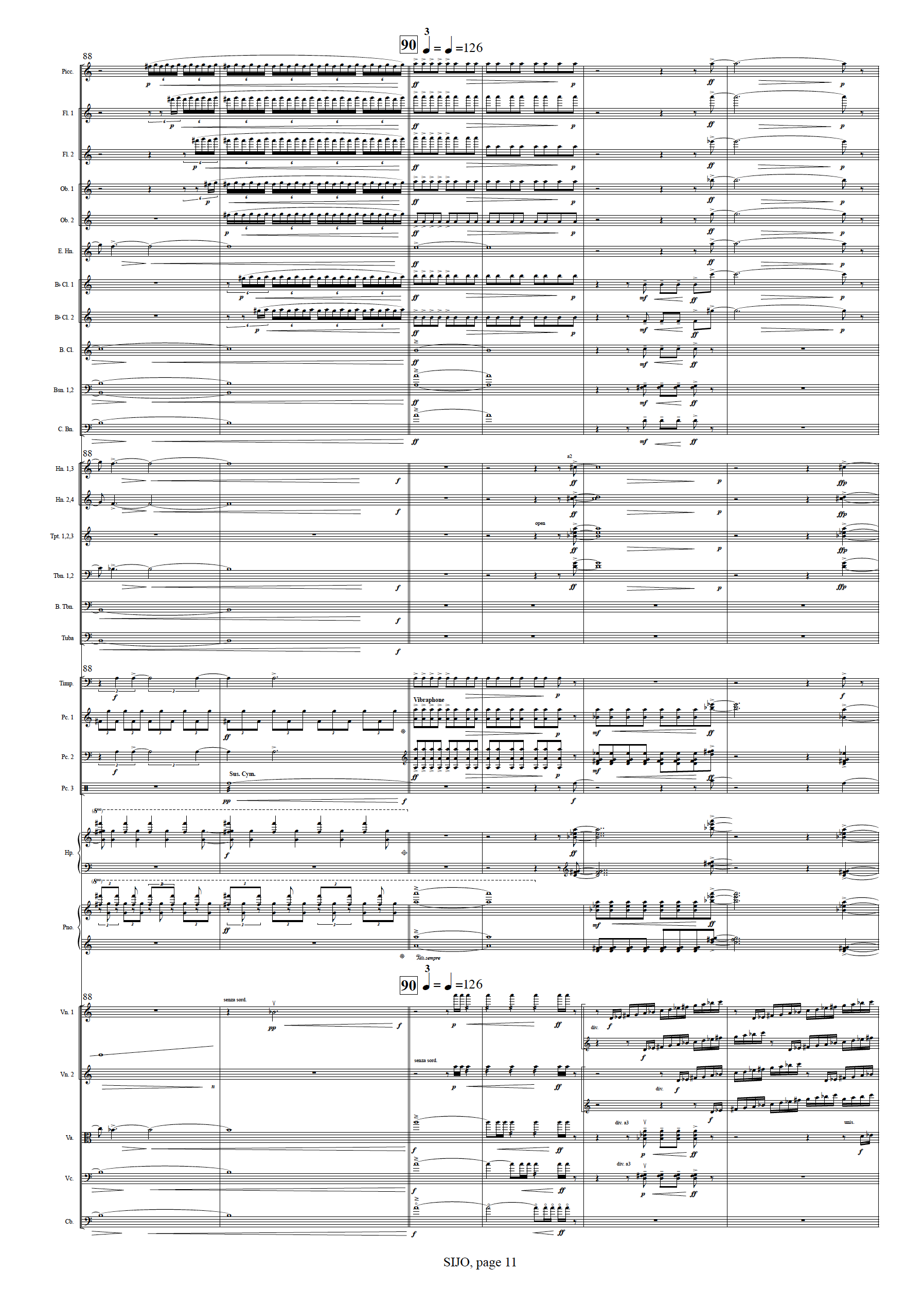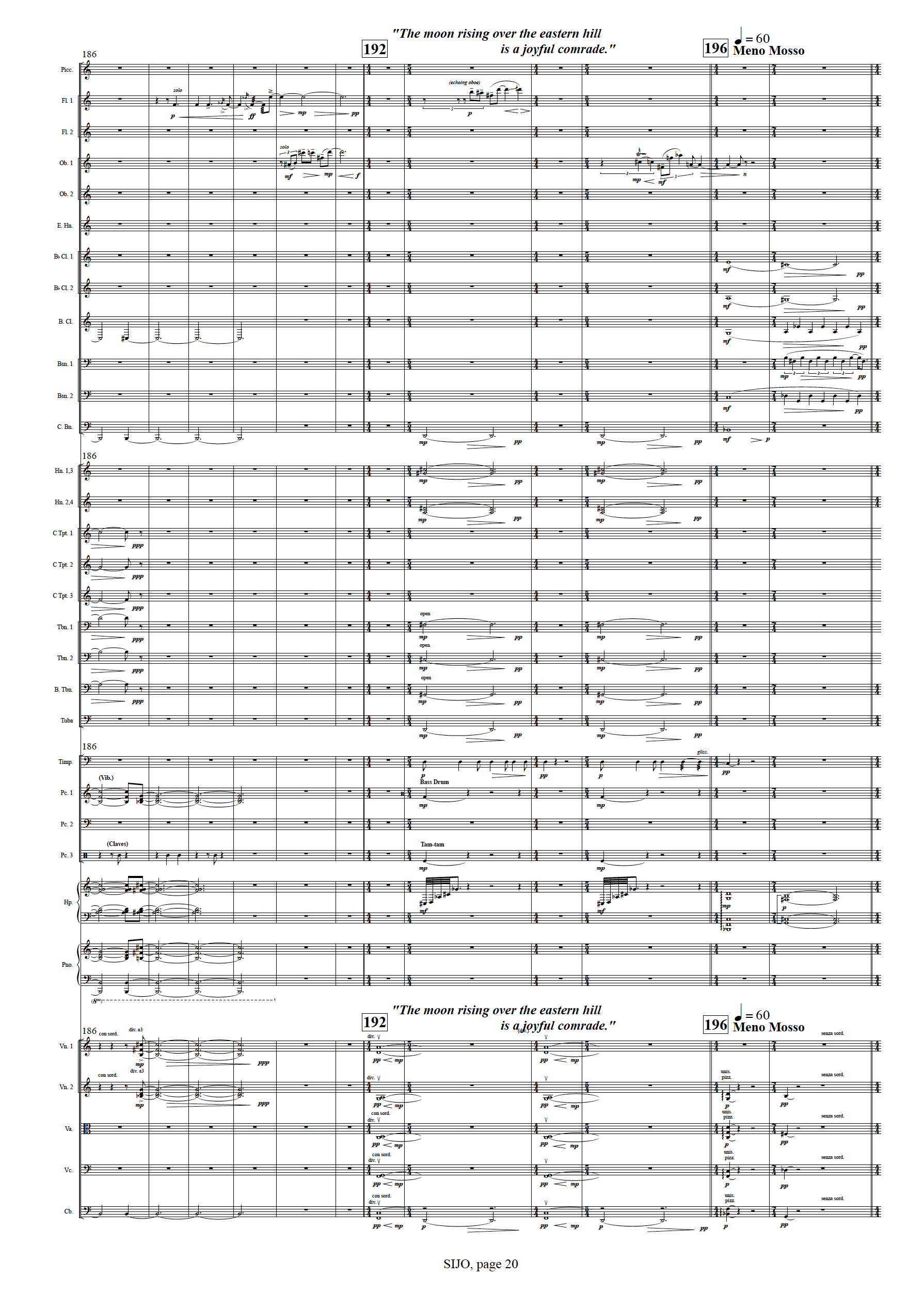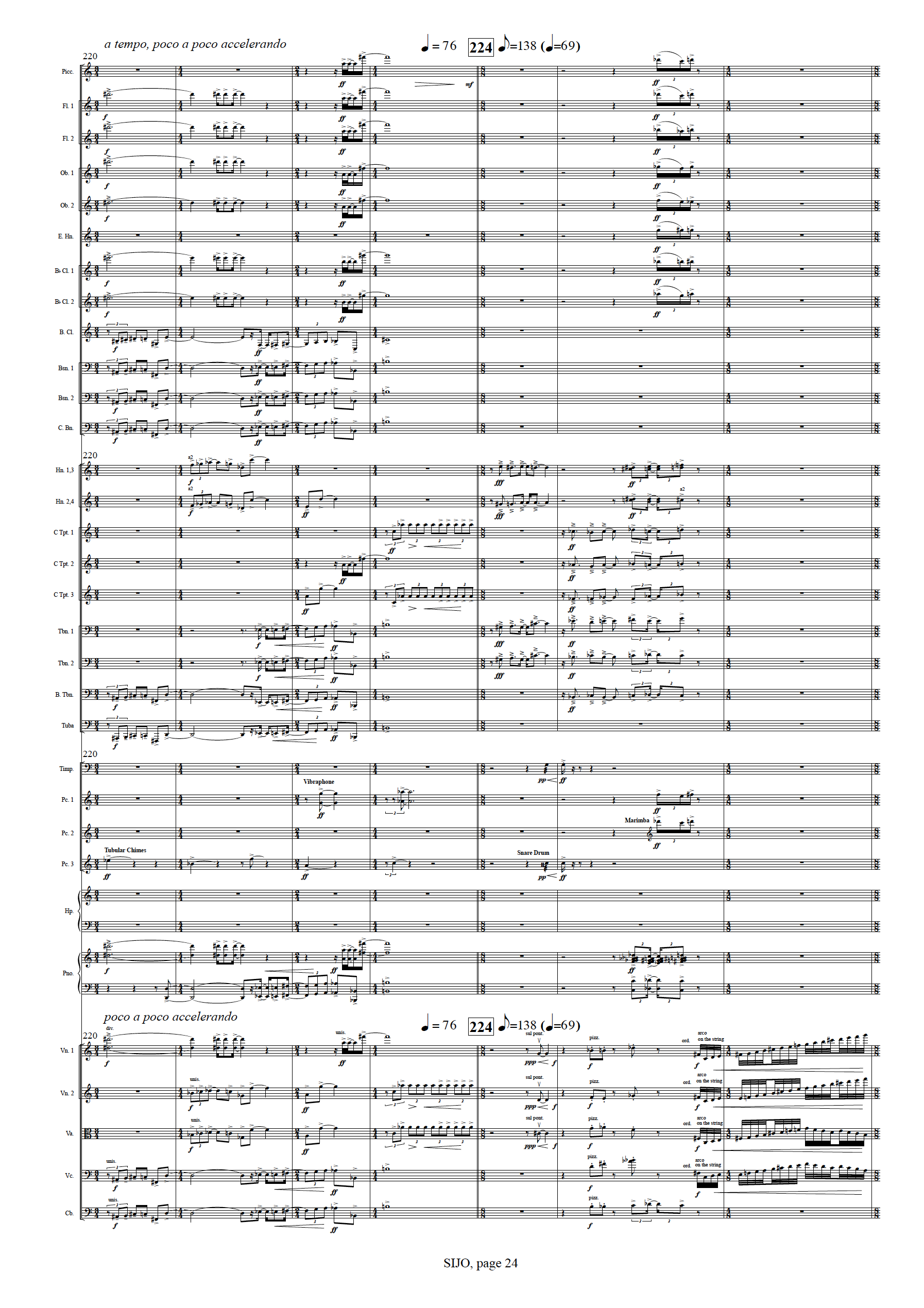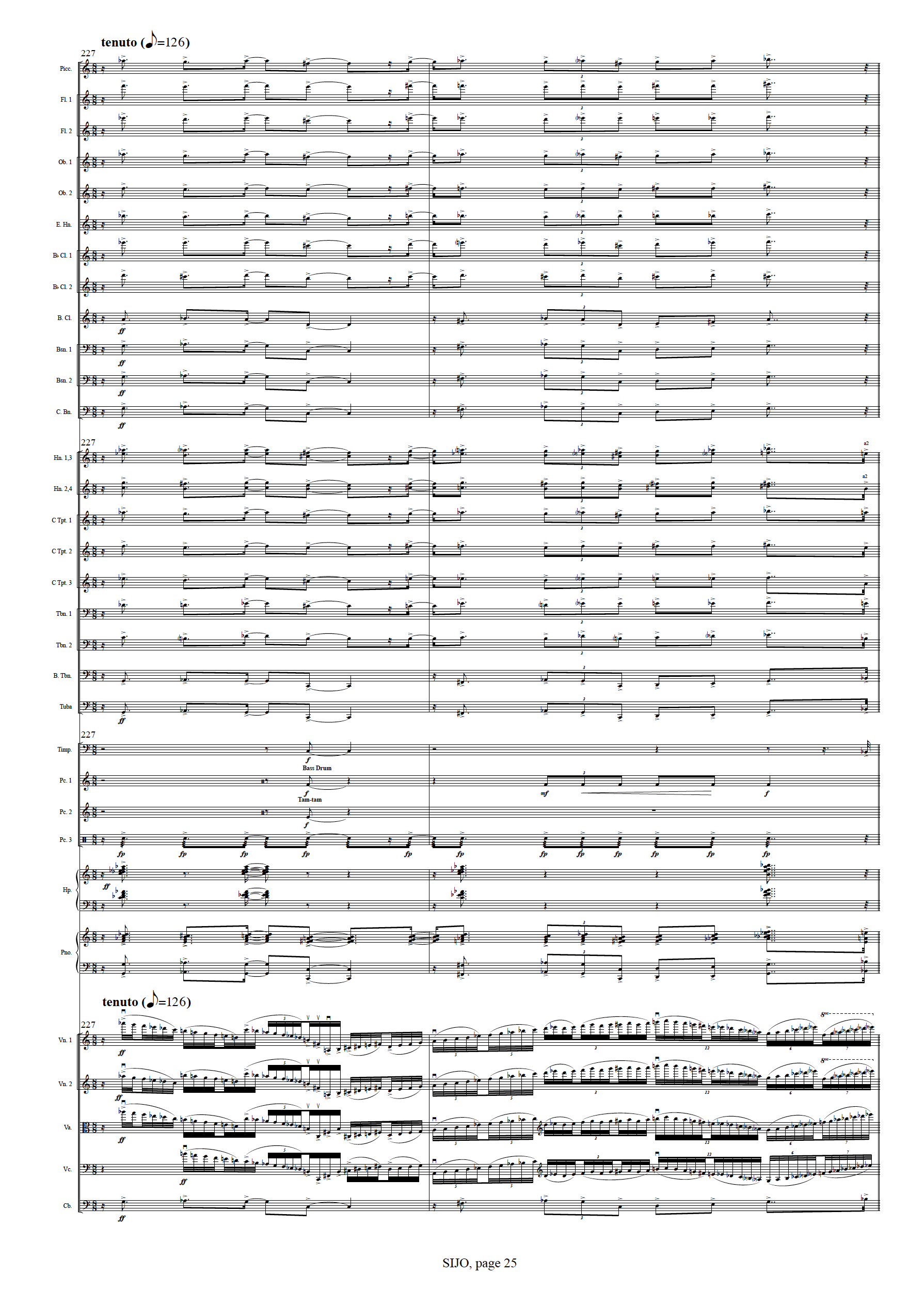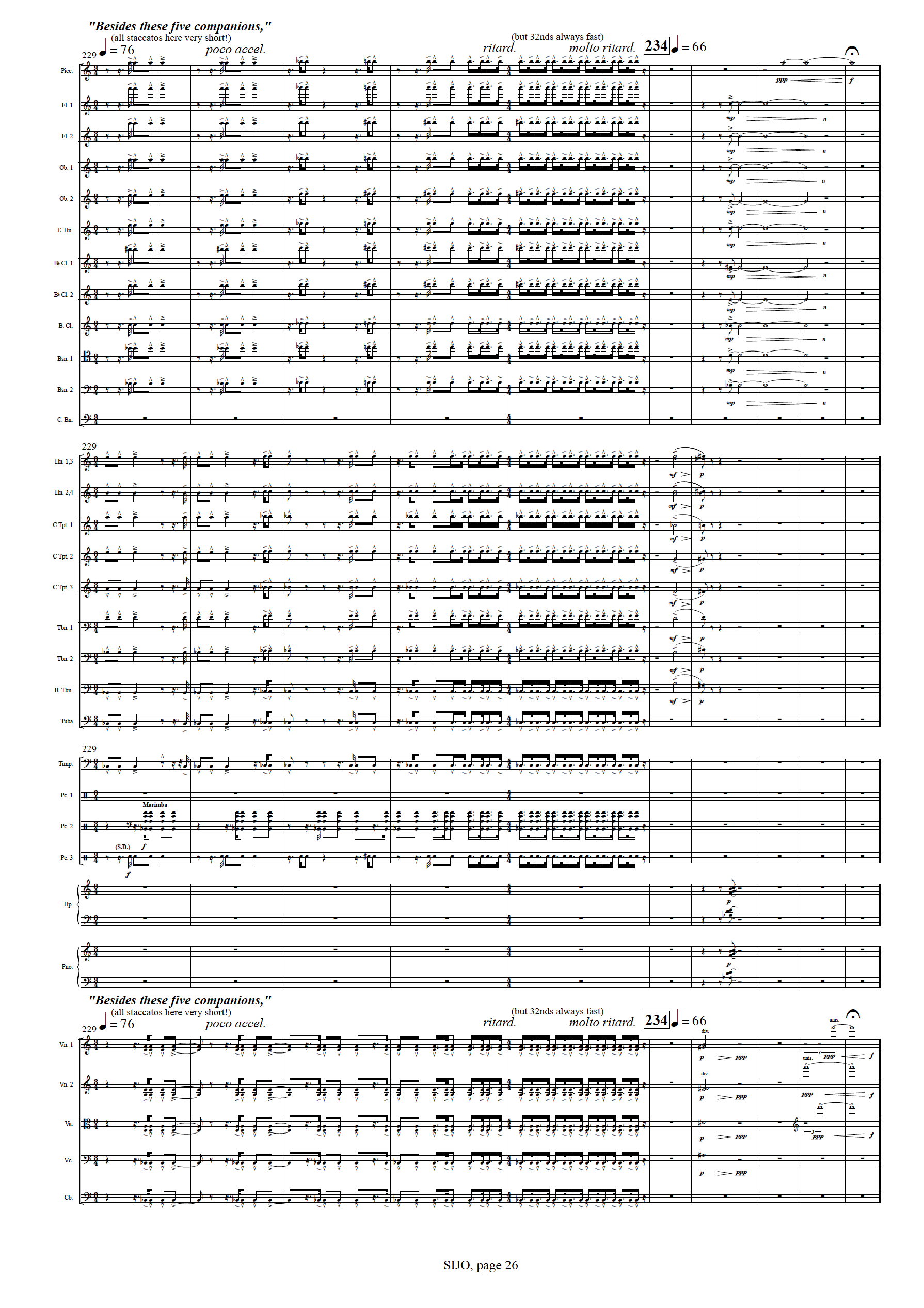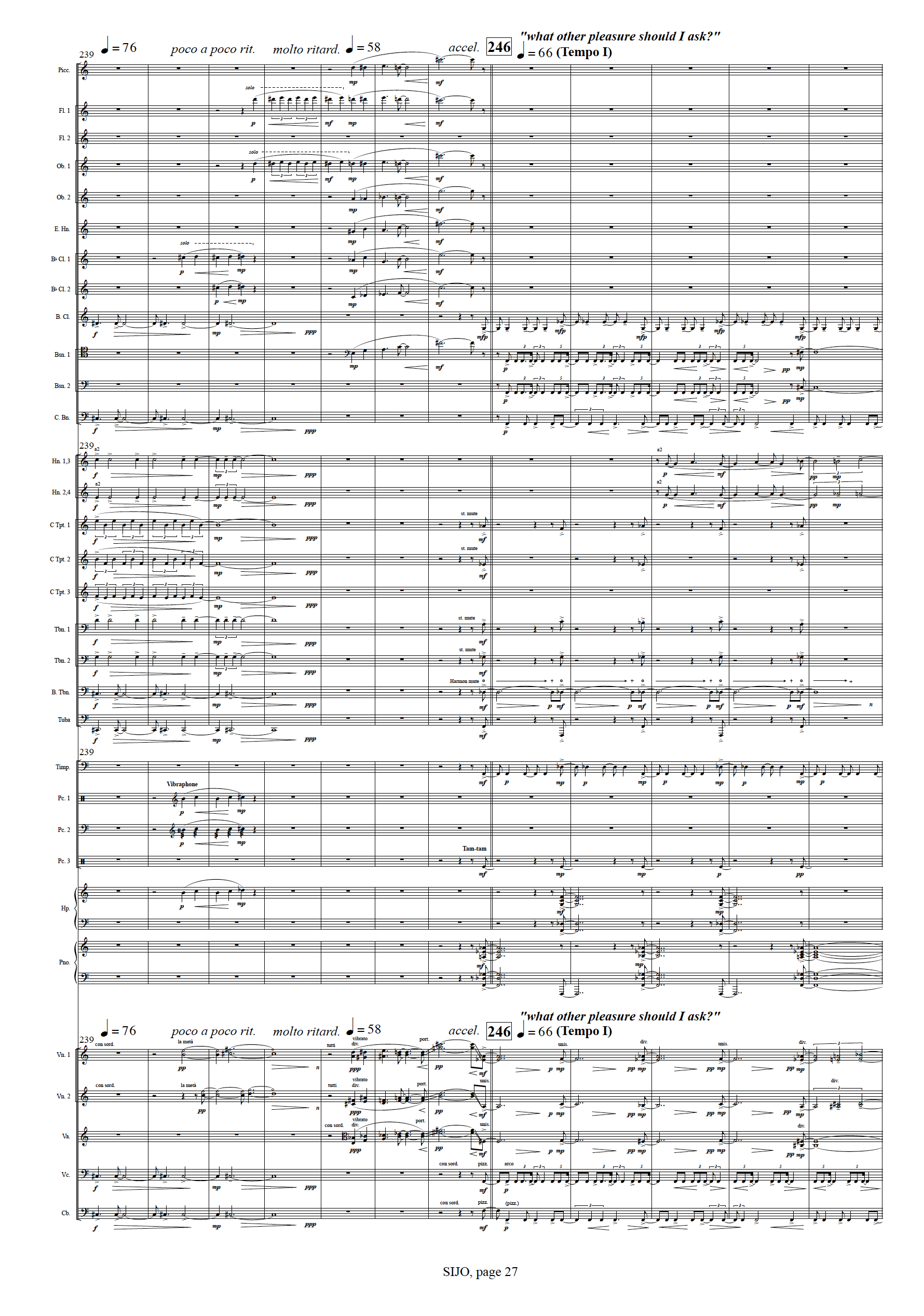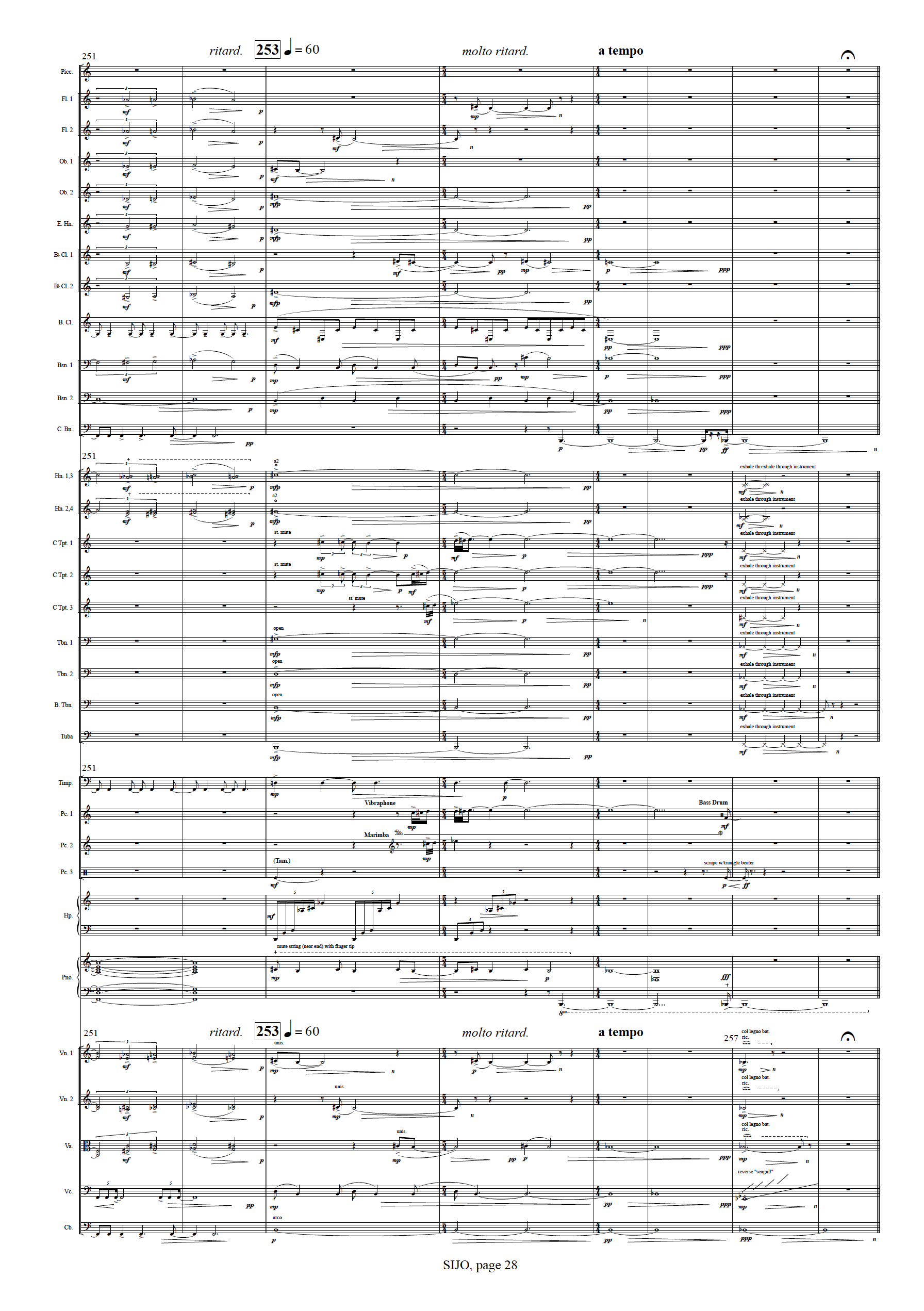SIJO for orchestra
(2017)
instrumentation:
3(3=pc)3(3=Ehn)3(3=Bcl)3(3=cbn)/4331/timp.3perc.hp.pno/strings
duration: 15 minutes
premiere:
2017 Asia Cultural Center Contemporary Performing Arts Festival
Asia Classical Players Orchestra, Ji-yong Park
Gwangju, South Korea, September 22, 2017
US premiere:
Indiana University Concert Orchestra, David Neely
October 22, 2017
Perusal Score:
Commissioned by the Asia Culture Center for the
2017 ACC Contemporary Performing Arts Festival
Published scores (sale) and parts (rental) are available through ACC
(contact David Dzubay for more information)
Program Note:

Yun Seondo (1587–1671)
How many friends do I have? Water, stone, bamboo, pine...
I am especially happy to see the moon rising over the eastern mountain.
Let it be so. Why would I need more than these five?
Translation by Texu Kim
Sijo is a Korean poetic form structured in three lines, introducing a situation in line 1, a development in line 2, and a twist and conclusion in line 3. This lyric pattern gained popularity in royal courts as a vehicle for religious or philosophical expression, but a parallel tradition arose among the commoners. Sijo were sung or chanted with musical accompaniment, and this tradition survives. The word originally referred only to the music, but it has come to be identified with the lyrics.
My work takes the beautiful text by Yun Seondo, discussing "five friends" – water, stone, bamboo, pine and moon – as inspiration and structure. Indeed, the poem is "set to music." Near the beginning, the orchestra recites the second half of the first line, introducing four of the five "companions." The first two thirds of the piece is an exploration of music representing water, stone, bamboo and pine. After reaching a moment of calm, the fifth companion – the rising moon, is introduced; then the music gradually builds to a rather dramatic statement of the questioning final line, followed by a calm reflection of the contented ending.
David Dzubay (October 2017)


